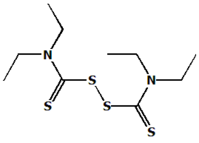This is the kind of story that makes you upset. Jeff is an oral surgery resident in an urban hospital with a dental clinic. One day in the clinic, Jeff heard screaming in one of the treatment rooms and went to see if he could be of some assistance. There he saw an 8-year-old boy who was having a tooth extracted. The first year resident trying to operate on the boy was having a really hard time--the tooth just wouldn't numb up. Jeff reviewed the boy's health history and, although the AIDS box on the questionnaire wasn't checked, Jeff was able to quickly zero in on the problem.
The mother of the child was pressed to disclose any debilitating illness her son might have, but repeatedly responded with "none". Jeff next questioned her about the answers she gave on the health history questionnaire. Knowing that one of the medications she indicated her son was taking was a very current medication for the treatment of AIDS, he was finally able to get the mother to disclose that her son had AIDS.
The mother confessed that she just wanted the tooth extracted because he was constantly crying and keeping her up at night. They did not extract the boy's tooth that day but made an appointment for him to have his tooth extracted under general anesthetic in a hospital operating room where they would be prepared for any emergency that might occur.
The dental assistant is the front line for patients coming into the practice. Would the average dental assistant have had any clue that the medication listed was a medication for the treatment of AIDS? The answer is no. It is the responsibility of every health professional to get the most accurate and complete health history, and that includes questioning patients' medications. Further, it includes knowledge of current medications so that you know what questions to ask.
We are taught to treat all patients as if they had AIDS, and so the mother's omission probably would not have made a difference in what was done or the way it was done, but it certainly might have made a difference in another way.
For whatever reason, the mother did not let the resident know the status of her son's health, and because of that her son was traumatized. If one was familiar with the current meds used to treat AIDS, then that child could have been shielded from needlessly suffering pain.
So often in the assisting profession we update our knowledge of current medications but for some reason it seems that the current drugs for AIDS are rarely listed in these updates. Because it is the responsibility of everyone in the health care field to keep up to date, we have reviewed the approved antiretroviral agents for the treatment of HIV infection. They are listed in a chart first published in The Rx Consultant. Because new medications are constantly being introduced, this is by no means an exhaustive list; but it is a current one. Read on and be current!
Diane Chandler, CDA has been practicing in the dental field for 15 years. Every February she does a public service cable program on dental oral hygiene.
Michael Palmer, RPh is a 2000 graduate of Wayne State University School of Pharmacy and Allied Health Professions. He is presently employed full-time at St. John's Hospital and Medical Center. His previous publication was entitled "Appropriate Use of Stress Ulcer Prophylaxix in Surgical Intensive Care Patients".
Chart used with the permission of "The Rx Consultant": www.rxconsultant.com
COPYRIGHT 2002 American Dental Assistants Association
COPYRIGHT 2003 Gale Group



